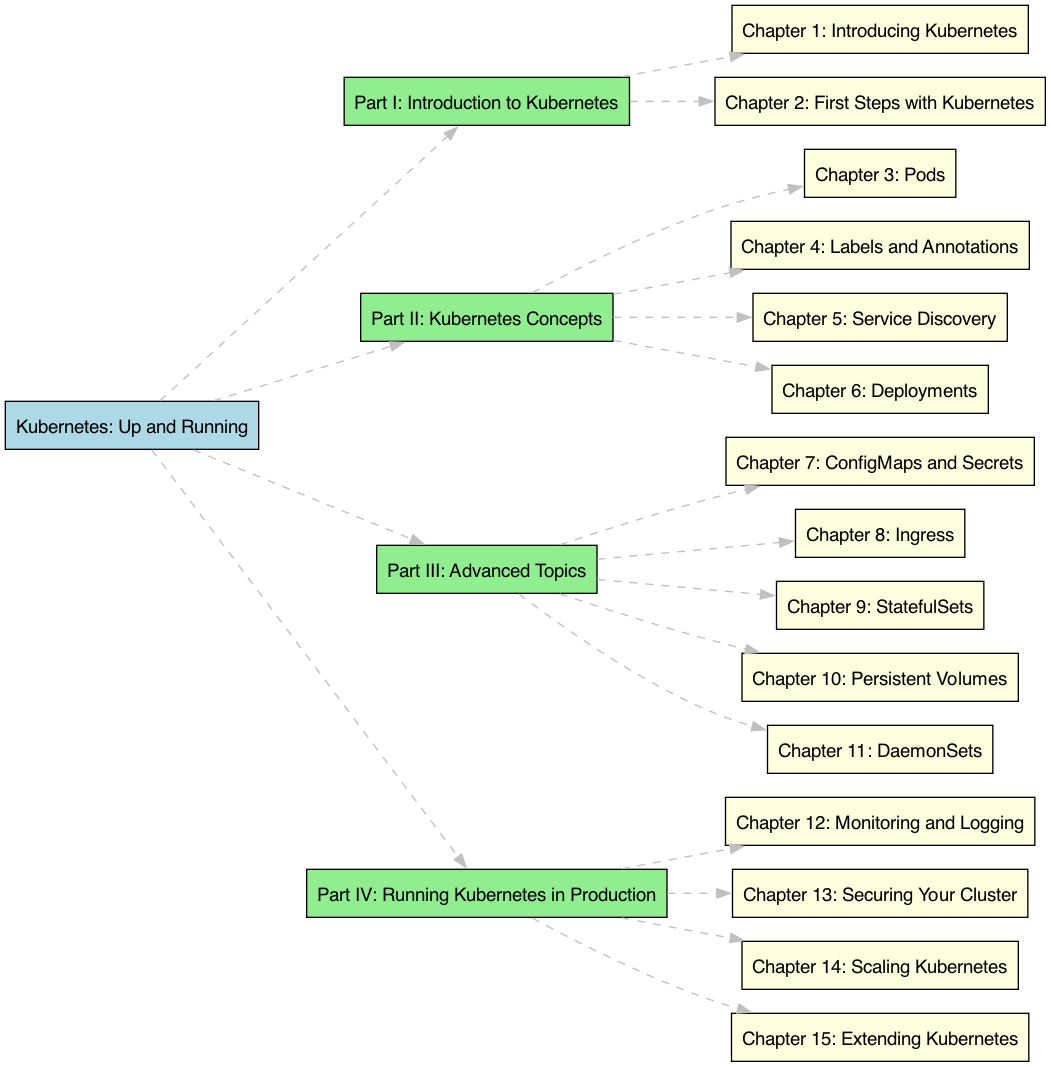Insights from Kubernetes Up and Running, 3rd Edition
Kubernetes: Up and Running by Brendan Burns, Joe Beda, and Kelsey Hightower is a comprehensive guide to understanding and deploying Kubernetes, the leading platform for container orchestration. This book provides a thorough introduction to Kubernetes, covering its architecture, deployment, and management, along with practical examples and use cases. It's an essential resource for anyone looking to leverage Kubernetes for scalable, resilient, and manageable applications.


Part I: Introduction to Kubernetes
Chapter 1: Introducing Kubernetes
The authors start by introducing Kubernetes, explaining its origins and the problems it aims to solve. They cover the basic concepts of containerisation, the benefits of using Kubernetes, and an overview of its architecture, including the components like nodes, pods, and clusters.
Chapter 2: First Steps with Kubernetes
This chapter guides readers through their first interaction with Kubernetes. It includes steps for setting up a local Kubernetes environment using Minikube, deploying a simple application, and managing its lifecycle through scaling and updates.
Part II: Kubernetes Concepts
Chapter 3: Pods
Pods are the smallest deployable units in Kubernetes, consisting of one or more containers. The chapter explains the lifecycle of a pod, how to define pods using YAML configuration files, and the importance of pod networking and storage.
Chapter 4: Labels and Annotations
Labels and annotations are key-value pairs attached to objects in Kubernetes, used for organising and managing resources. This chapter covers how to use labels for selection and grouping, and annotations for attaching metadata to Kubernetes objects.
Chapter 5: Service Discovery
The authors delve into the mechanisms of service discovery in Kubernetes. They explain how services work, including different types of services (ClusterIP, NodePort, LoadBalancer) and how Kubernetes manages service endpoints and DNS.
Chapter 6: Deployments
Deployments are essential for managing applications in Kubernetes, providing declarative updates to pods and replica sets. This chapter covers creating and managing deployments, rolling updates, and rollback strategies.
Part III: Advanced Topics
Chapter 7: ConfigMaps and Secrets
ConfigMaps and Secrets are used to manage configuration data and sensitive information, respectively. The chapter explains how to create and use ConfigMaps and Secrets, and the security considerations involved.
Chapter 8: Ingress
Ingress resources manage external access to services in a Kubernetes cluster, typically HTTP and HTTPS. This chapter covers setting up Ingress controllers, defining Ingress resources, and using Ingress for load balancing and SSL termination.
Chapter 9: StatefulSets
StatefulSets manage stateful applications in Kubernetes, ensuring the deployment and scaling of sets of pods with unique identities. The authors explain the differences between StatefulSets and Deployments, and provide examples of managing stateful applications like databases.
Chapter 10: Persistent Volumes
Persistent Volumes (PVs) and Persistent Volume Claims (PVCs) are used to manage storage in Kubernetes. This chapter covers the lifecycle of PVs and PVCs, dynamic provisioning, and storage classes.
Chapter 11: DaemonSets
DaemonSets ensure that all (or some) nodes run a copy of a pod. They are used for deploying background tasks like monitoring agents and log collectors. This chapter explains how to create and manage DaemonSets.
Part IV: Running Kubernetes in Production
Chapter 12: Monitoring and Logging
Monitoring and logging are critical for maintaining the health and performance of a Kubernetes cluster. This chapter covers tools and practices for monitoring Kubernetes, collecting logs, and integrating with external monitoring systems.
Chapter 13: Securing Your Cluster
Security is paramount in any Kubernetes deployment. The authors discuss best practices for securing Kubernetes clusters, including network policies, role-based access control (RBAC), and securing the Kubernetes API server.
Chapter 14: Scaling Kubernetes
Scaling is one of the key benefits of using Kubernetes. This chapter covers horizontal and vertical scaling of applications, auto-scaling features, and best practices for managing scalability in Kubernetes.
Chapter 15: Extending Kubernetes
Kubernetes is highly extensible. This chapter explores how to extend Kubernetes using custom resources and controllers, the Operator pattern, and integrating with other systems and services.
Key Takeaways
- Comprehensive Understanding of Kubernetes: The book provides a thorough introduction to Kubernetes, from basic concepts to advanced features.
- Practical Examples: Practical, hands-on examples help solidify the concepts discussed, making it easier to apply them in real-world scenarios.
- Best Practices: The authors emphasise best practices for deploying and managing Kubernetes clusters, ensuring secure, scalable, and reliable applications.
- Extensibility: Kubernetes' extensibility through custom resources and controllers allows for significant customisation to meet specific needs.
Personal Reflections
Read Kubernetes: Up and Running is instrumental in the understanding the full potential of Kubernetes. The clear explanations and practical examples have demystified many aspects of container orchestration, and the emphasis on best practices will be invaluable in future deployments. The book's structure makes it accessible to both beginners and experienced practitioners, providing a solid foundation and advanced knowledge.
Conclusion
Kubernetes: Up and Running by Brendan Burns, Joe Beda, and Kelsey Hightower is an essential resource for anyone looking to master Kubernetes. Its comprehensive coverage, practical insights, and emphasis on best practices make it a must-read for developers, system administrators, and DevOps professionals. By following the guidance in this book, readers can effectively leverage Kubernetes to deploy, manage, and scale their applications.